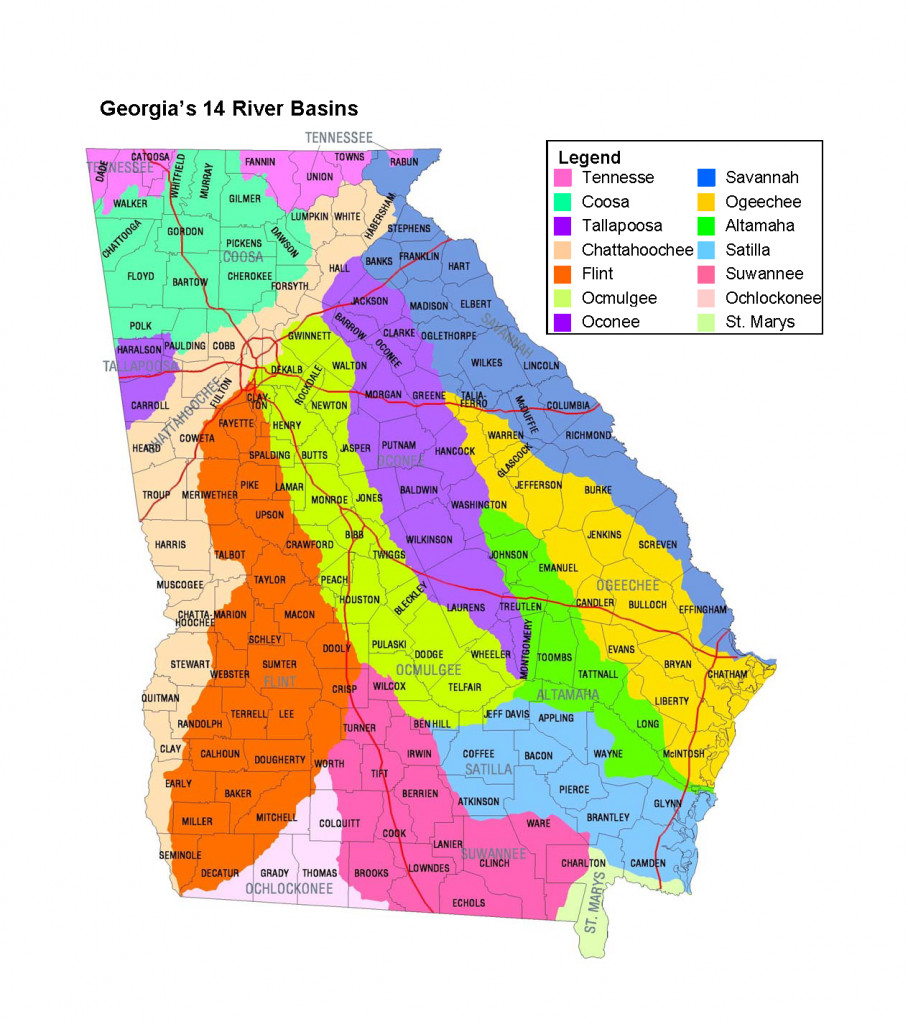The natural landscapes of Georgia are defined by its extensive river systems, vital arteries that carve through the state’s diverse geography and support a wealth of ecosystems. Among these significant waterways, the Chattahoochee River holds a unique position. Not only is it a crucial water resource for Georgia, but it also serves as a defining natural border, most notably between Georgia and Alabama. Understanding the Chattahoochee’s role as a boundary is key to appreciating its broader significance in the region.
Georgia is home to fourteen major river basins, each a complex network of streams and rivers that drain a specific geographic area. These basins are essential to the state’s ecological health and provide numerous benefits, from supporting diverse wildlife to supplying water for communities and agriculture. The Chattahoochee River basin is particularly noteworthy due to its location and the demands placed upon it.
The Chattahoochee River’s journey begins in the Blue Ridge Mountains of north Georgia. From its headwaters at the southern edge of these mountains, the river flows for approximately 430 miles, carving a path southwestward. Its confluence with the Flint River at Lake Seminole in southwest Georgia marks the end of its independent course. This path makes the Chattahoochee a central feature in the landscape, and crucially, a significant portion of this flow establishes the boundary between Georgia and Alabama.
While the Savannah River forms the well-known border between Georgia and South Carolina, the Chattahoochee River defines much of Georgia’s western edge, acting as the state line with Alabama. This boundary role is not merely a geographical marker; it has significant implications for water management, resource allocation, and interstate relations. The river’s presence as a border underscores its importance beyond just an environmental feature; it is a legal and political demarcation as well.
 Georgia River Basins
Georgia River Basins
The Chattahoochee River Basin: A Vital Water Resource
The Chattahoochee River basin is not only geographically significant but also ecologically and economically vital. Draining an area of 8,770 square miles, it is the most heavily utilized water resource in Georgia. This basin is part of the larger Apalachicola-Chattahoochee-Flint (ACF) river basin, a tri-state system that includes Georgia, Alabama, and Florida. The ACF basin is a subject of considerable attention and sometimes contention, primarily due to the high demand for its water resources and the ecological sensitivities of the region.
The river’s journey from the mountains to Lake Seminole encompasses varied hydrological zones. The headwaters and upper reaches, north of the fall line, are primarily supplied by surface water. South of the fall line, the river interacts with significant aquifers, including the Providence and Floridan aquifer systems. Notably, the connection with the Floridan aquifer, a highly productive karst limestone aquifer, is less pronounced in the Chattahoochee compared to the Flint River. This hydrological difference impacts the baseflow characteristics of each river.
The Chattahoochee River and its basin are crucial for a multitude of reasons:
- Water Supply: It serves as a primary water source for numerous communities, including the highly urbanized Atlanta metropolitan area. The demand for drinking water, industrial use, and irrigation places significant pressure on the river’s resources.
- Ecological Habitat: The river and its surrounding basin provide habitat for a rich diversity of wildlife. This includes migratory birds, mammals, reptiles, amphibians, and a variety of fish and mussel species, some of which are endangered or threatened.
- Recreation: The Chattahoochee offers extensive recreational opportunities, including boating, fishing, and paddling. Areas along the river, particularly near urban centers and reservoirs, are popular destinations for outdoor activities.
- Hydropower: The Chattahoochee is impounded by numerous dams, many of which are used for hydroelectric power generation. These dams, while providing power and water management, also significantly alter the river’s natural flow regime.
 Chattahoochee River
Chattahoochee River
Environmental Challenges and Conservation
Despite its importance, the Chattahoochee River faces significant environmental challenges, particularly in its upper reaches. The river’s passage through metropolitan Atlanta has led to considerable pollution and habitat degradation. The upper Chattahoochee watershed is recognized as one of the most polluted in Georgia and among the most impacted in the nation.
Key environmental concerns include:
- Pollution from Urban Runoff: Stormwater runoff from urban areas carries pollutants into the river, degrading water quality.
- Nonpoint Source Pollution: Agricultural and residential runoff contribute to nutrient and chemical pollution.
- Municipal and Industrial Discharges: Point source discharges from wastewater treatment plants and industrial facilities add to the pollution load.
- Sewer Overflows: Combined sewer systems in older urban areas can overflow during heavy rains, releasing untreated sewage into the river.
- Habitat Loss: Urban development and altered river flows from dams contribute to the loss and degradation of critical habitats for aquatic and terrestrial species.
These environmental stressors have led to impairments in water quality and threats to the biodiversity of the Chattahoochee River basin. Organizations and agencies are actively involved in conservation and restoration efforts. These initiatives range from water quality monitoring and pollution control measures to habitat restoration and public education programs. The health of the Chattahoochee River is not only vital for Georgia and Alabama but also for the broader ecological integrity of the southeastern United States.
 West Point Lake
West Point Lake
The Chattahoochee’s Border Significance: Georgia and Alabama
The role of the Chattahoochee River as a border between Georgia and Alabama is more than a line on a map. It is a living boundary that influences legal, environmental, and social dynamics between the two states. This boundary has been historically significant and continues to play a crucial role in contemporary issues, particularly concerning water rights and resource management.
The establishment of the Chattahoochee as a border dates back to the early 19th century and has been subject to various agreements and interpretations over time. The river’s meandering course and the dynamic nature of river systems have occasionally led to boundary disputes and legal challenges. However, for the most part, the Chattahoochee River has served as a stable and recognized demarcation between Georgia and Alabama.
The implications of the Chattahoochee as a border are multifaceted:
- Water Allocation: As part of the ACF basin, the Chattahoochee River is central to water allocation disputes between Georgia, Alabama, and Florida. The states have engaged in protracted legal battles over water rights, particularly concerning the rapidly growing water demands of metropolitan Atlanta and the downstream impacts on Alabama and Florida.
- Environmental Management: Cooperative management of the river’s environmental health is essential for both states. Pollution originating in one state can directly impact the water quality and ecosystems in the other. Therefore, interstate collaboration is necessary for effective conservation efforts.
- Interstate Relations: The Chattahoochee border necessitates ongoing communication and cooperation between Georgia and Alabama on various issues, from economic development along the river corridor to emergency management during floods or droughts.
 Chattahoochee River
Chattahoochee River
Conclusion: The Enduring Importance of the Chattahoochee River
In conclusion, the Chattahoochee River is far more than just another river in Georgia’s extensive network. It is a defining geographical feature, a vital water resource, and a critical ecological artery. Its role as the border between Georgia and Alabama adds another layer of significance, underscoring its importance in interstate relations and resource management. The Chattahoochee’s story is one of both natural abundance and environmental challenge. Recognizing its multifaceted role is essential for ensuring its sustainable management and conservation for future generations. As a border and a lifeline, the Chattahoochee River remains a central element in the identity and landscape of Georgia and the wider southeastern region.

